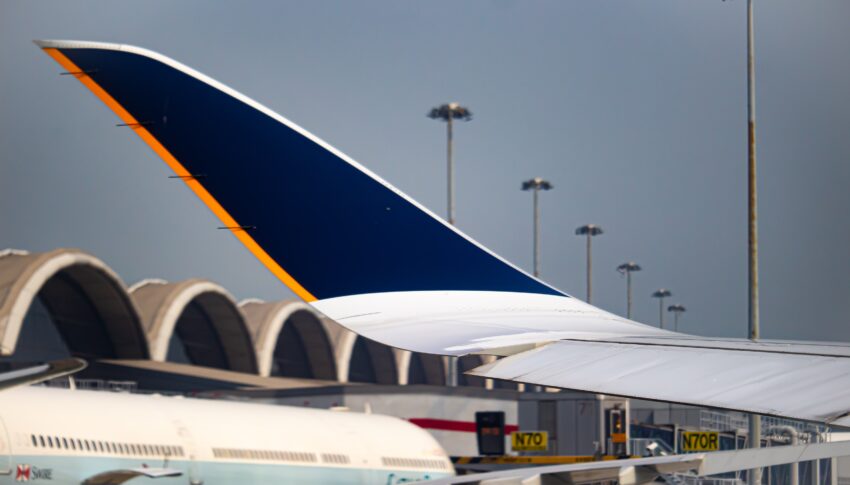As the way that aircraft are built evolves, aviation’s maintenance, repair and overhaul (MRO) industry evolves with them. We sat down with the Independent Aircraft Modifier Alliance (IAMA), a standards- and practices-focussed grouping of several major MRO houses, and with industry trade body the Aeronautical Repair Station Association (ARSA), to learn more about how new tools and techniques are changing the way that MRO operators work.
At this point in the evolution of COVID-19’s impact on aviation, IAMA’s managing director Nina Schulz tells us that “the pandemic was quite a hit in terms of developments for retrofits as the industry basically had to switch to survival mode. It is great to see that business is picking up again and even that some developments were fostered by the pandemic — for example, touchless lavatories and bins, [and] even more use of PEDs for entertainment and communication purposes.”
Schulz notes that, while some of the spanners-to-bolts elements of the MRO business continue unabated, new materials, technologies, requirements and processes mean that the MRO industry continues to evolve.
“In the field of MRO,” Schulz says, “robotic systems might help to support the staff. To my knowledge, initial test of exoskeletons were really successful. These means to ease physically challenging tasks will surely improve working conditions. The same applies to the usage of drones for inspection tasks. If inspections can be done without excessive hangarage and people required to climb on top of aircraft, this will result in quicker and safer processes.”
New materials mean new tools and techniques
As one big-picture example in the latest generation of aircraft engineering, Schulz highlights “the change to carbon fibre material for aircraft fuselage and major structural parts,” which she says “requires a complete shift in procedures for repairs and even more involvement of the OEMs to assist with approvals and instructions.”
With this new generation of aircraft — particularly notably the Boeing 787 and Airbus A350, of which over a thousand 787s and five hundred A350s have now been built, but also the increasing use of carbon fibre reinforced plastics on smaller and more numerous aircraft — comes a change to the way that aircraft maintenance is organised. Instead of fewer checks with a greater list of tasks per check, the industry has moved towards smaller packages of checks that allows airlines and MRO houses to optimise maintenance with a modularised approach.
Some of this is driven by shortened technology cycles leading to more frequent retrofits or replacement, but some of it is also driven by technology exclusivity with some systems. Recently, this has included a number of first- and second-generation inflight connectivity systems. Usually, transitioning between provider requires either a complete change of technology type (air-to-ground to satellite, where understandably one system must be removed and another installed) or a change of provider hardware (satellite to a different satellite provider, where it is less understandable that the transition requires a full hardware swap).
More widely, says ARSA Executive Director Sarah MacLeod, “as newer generations of aircraft need attention, tools, tooling, equipment, and test apparatus change. New training technologies, AI for diagnostics, self-monitoring aircraft systems, et cetera, have become more normal and available. For the general aviation world, in business aircraft, the technology can outstrip the airline world, but it is on an aircraft-by-aircraft basis, or small fleets. The older aircraft design is harder to modify to accommodate new operational technology, but the tools and diagnostics used by maintenance providers have improved. As the cockpit and cabin become more and more ‘avionic’ over mechanical, newer tools, tooling, test equipment, and training will be needed. The training will be delivered through newer technologies.”
This new technological picture includes self-diagnostics, connected test equipment, virtual and/or augmented reality, artificial intelligence and machine learning. A critical milestone for the industry is when an aircraft’s onboard systems can communicate to its airline’s maintenance operation that a system or party requires servicing, dramatically improving both efficiency and speed.
“I assume,” says IAMA’s Schulz, “all of this will result in less staff required to physically work on the aircraft. It will remain a highly specialised business in which humans will keep on playing a major role. But technology will greatly support transparency, security, safety and working conditions. This will also be required to keep up with technological development and expectations towards future workplaces.”
Sustainability is key to the many futures of aviation
“A rather new element will be related to sustainability considerations,” Schulz emphasises. “The entire life span of an aircraft will need to be evaluated when it comes to sustainability. From consumables and expendables to larger assemblies that will be needed or even be needed to be replaced during the life of an aircraft, all parts will in future also be selected according to sustainability criteria. Production, transportation, use — but also scrapping — will be judged differently.”
Inherently, durability and maintainability of parts to avoid the need for carbon-sunk replacement parts will be vital. So will designing for reuse and recycling rather than for disposal.
“Nevertheless,” Schulz says, “for me the MRO business is a very sustainable business by definition. MRO companies ensure the extended use and optimization of assets in the best possible way. Every well maintained asset, be it a line-replaceable unit or an aircraft, ensures continued usage and reduces need for a new part.”
In addition, she notes, “logistics are very important in the daily operations of MROs. Machine-driven systems will replace very labour intensive tasks and speed up processes: ordering and storage, as well as actual supply of hangars.”
Looking to the future, ARSA’s Sarah MacLeod imagines that, “in another generation, there could be flying cars and the entire aviation industry could look completely different. When it comes to electric vehicles, MRO may consist of changing batteries. That does not mean older aircraft will not need attention — the technology will be adapted as it matures for the new generations.”
Author: John Walton
Published: 7th February 2023




